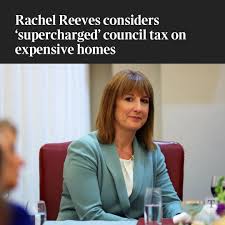Rachel Reeves and the Future of Council Tax Bands

Introduction
The issue of council tax bands has come under increasing scrutiny in the UK, especially with the ongoing financial pressures faced by local councils and households alike. Rachel Reeves, the Shadow Chancellor of the Exchequer, recently highlighted the relevance of council tax bands in an effort to address inequalities and provide better funding for essential services. This article aims to unpack her recent comments and their implications for residents across the country.
Current Landscape of Council Tax Bands
Council tax in England and Wales is structured around eight bands, labelled from A to H, with Band A representing the lowest value properties and Band H the highest. However, the valuations upon which these bands are based have not been updated for nearly three decades, leading to disparities in tax contributions across different areas. Reeves pointed out that many families in lower-band properties are disproportionately affected as property value increases have not been reflected in council tax band adjustments.
Rachel Reeves’ Proposal
During a recent speech, Rachel Reeves proposed a comprehensive review of council tax bands with the goal of levelling the playing field for tax contributions. Her plan includes regularly updating band valuations to better align with current property market trends and ensure that funding for local services is equitable. She emphasised that this reform would help alleviate the financial burden on lower-income households while providing necessary funding to councils to support vital public services such as education, health, and social care.
Reactions and Implications
Reeves’ call for reform has received mixed reactions from politicians and the public. Supporters argue that updated bands will lead to a fairer tax system and better resource allocation, while opponents caution that increasing tax bands could place further financial strain on homeowners already struggling with living costs. Additionally, there are concerns about whether such reforms would splash out into the broader housing market, influencing property values further.
Conclusion
As the debate surrounding council tax bands continues, Rachel Reeves’ advocacy for reform highlights the need for a more equitable approach to taxation that supports all citizens. The potential changes to council tax bands could pave the way for financial relief for many households, while also addressing the chronic underfunding of local services. As these discussions evolve, it remains crucial for policymakers to balance the interests of varied demographic groups, ensuring that any reforms are just and sustainable for future generations.
